11 Facts About Deer Head Chihuahua Mix Dogs (with PHOTOS!)
Perhaps you’re considering gaining a tiny, new family member. Whether you’re debating or want to learn more about the Deer Head Chihuahua, I’ll explain everything you need to know below in this guide.
The Deer Head Chihuahua is a cuddly dog breed. Let’s uncover fun facts, and learn about their appearance, personality, common health conditions, and how to take proper care of your pup. So, here’s your guide to 11 facts about the Deer Head Chihuahua mix dog breed!
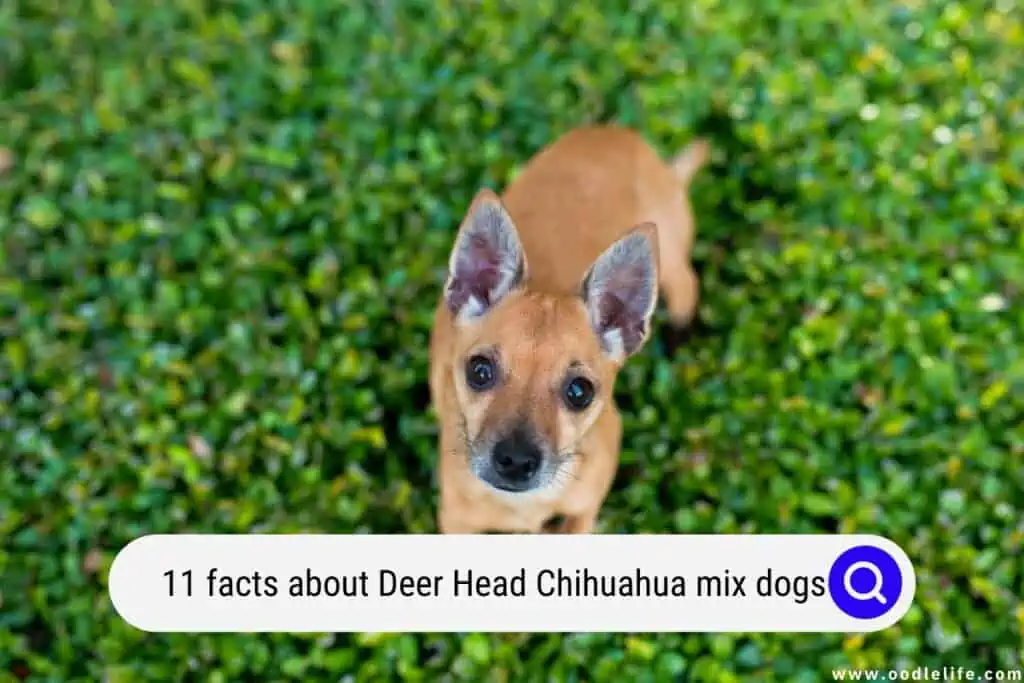
The Deer Head Chihuahua Breed
There are some interesting facts regarding the pint-sized dog breed. However, there’s a lot to discover, from historical facts and breeding to the Deer Head’s personality.
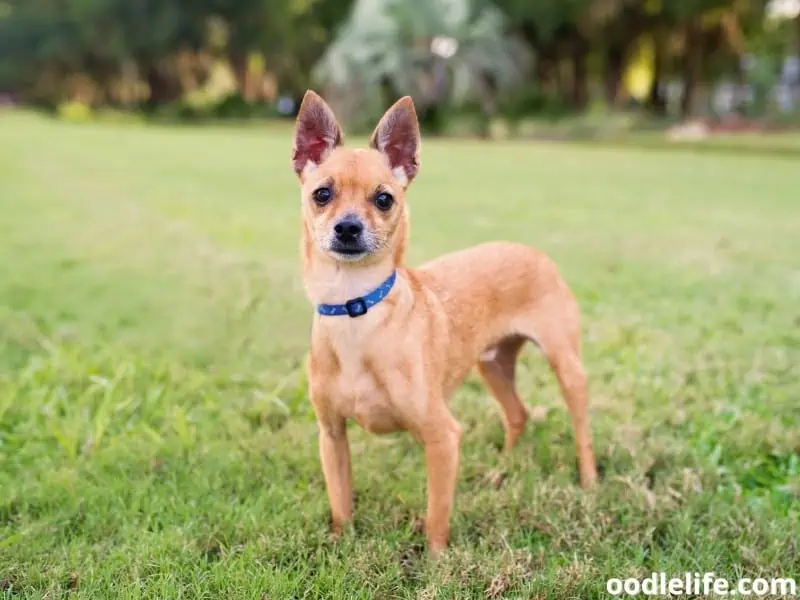
1. Deer Head Chihuahua History
It’s unclear where the breed originated, but they stem from the Techichi. Early records indicate that the Techichi dates back to 300 BC in Mexico. It’s said that the species was popular with the Aztecs in the 1500s and was very similar to the Chihuahuas you love and know today.
Chihuahuas were rediscovered in America around 1850 and have been in the states since. The American Kennel Society finally recognized the Deer Head Chihuahua mix in the early 1900s.
2. Not an Official Breed
Although the Deer Head Chihuahua is purebred, their heads are larger than the typical Chihuahua with an apple-shaped head.
According to the American Kennel Club, the Deer Head Chihuahua isn’t an official dog breed. As a result, Deer Head breeds aren’t allowed to enter dog shows based on the club’s standards. However, they can still be registered as Chihuahuas through the AKC.
If you’re purchasing your new pup through a breeder, ensure the breeders obtain proper American Kennel Club licensing and guidelines. The average cost varies between $400 to over $1,000. Overall, many Deer Head Chihuahuas are put up for adoption instead.
3. Deer Heads Aren’t Hypoallergenic
While there’s no such thing as an allergy-proof dog, the Deer Head isn’t as hypoallergenic as you think. Shedding occurs throughout the year, leaving dander which triggers allergies, and spring is typically the worst season.
The good news is that the Deer Head Chihuahuas release less dander than larger breeds due to their size. Additionally, you may experience reactions during high shedding times if you’re sensitive.
To combat allergens, cleaning your house often helps, especially vacuuming. In addition, you may invest in a quality air filter for your home. Lastly, proper dog bathing, brushing, and grooming reduce dog dander!
4. Personality Facts
While the breed has a ton of energy, they’re also quite affectionate, love being around others, and are less likely to have a temper. The Deer Head Chihuahua quickly gets along with the family and other dogs. Although, they’re also prone to having separation anxiety.
Even though they’re easy-going pups, you may reconsider if you have small kids in the home. However, if you have little ones, keeping a close eye is essential as the Chihuahua breed injures easily.
The Deer Heads are incredibly loyal and protective and make wonderful pets. If you’re allergic, there are ways to combat symptoms, especially during certain times of the year. While the pup is feisty sometimes, the good news is that the dog is trainable.
Appearance Facts
While Chihuahuas may look alike, the Deer Head is a unique toy breed. The breed holds exciting facts from their coat and size.
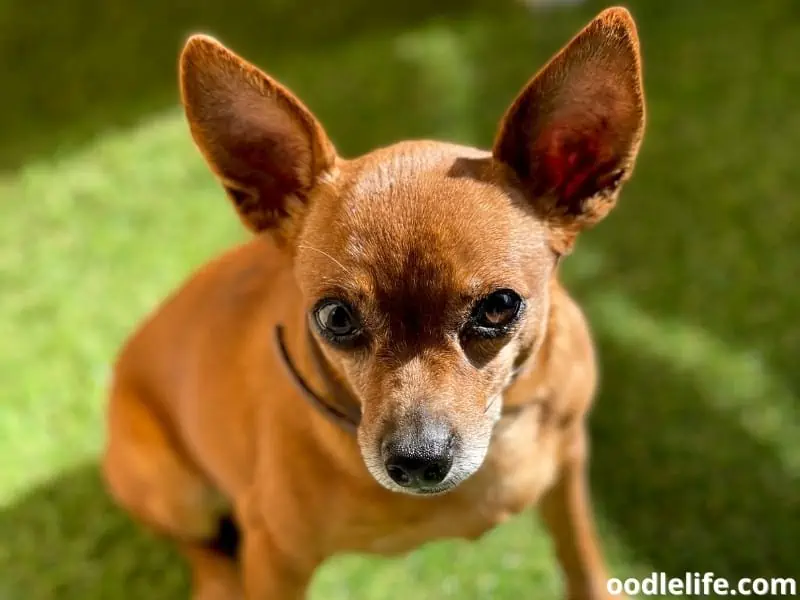
1. Size of the Deer Head Chihuahua
The breed gets its name due to resembling the head of a baby deer. Compared to other Chihuahuas, they have larger ears and longer legs. Most Deer Head Chihuahuas grow to a small 8-12 inches, with an average weight of ten pounds.
Even though they’re already small, you can buy this breed in a teacup version! These pups weigh between a couple to eight pounds at most. However, breeders tend to take advantage and charge extra for teacups due to their popularity and cuteness.
2. Coats and Coloring
Deer Head Chihuahuas have different colors: brown, red, silver, gray, black, or white. Coats are either long or smooth in appearance. They also contain different patterns.
Markings include the following:
- Spots
- Black/blue mask
- Cream, red marking
- Merle
- Black sable gray
- Black bridling
Most Deer Heads have very dark brown eyes. However, according to standard breeding, they can also have a reddish-brown color depending on the light. Some may even have hazel eyes or a lighter shade of brown.
From their small structure to being versatile in color and markings, their deer-like heads set them apart from other Chihuahuas.
Health Issues and Conditions
Smaller dogs tend to have similar health conditions due to build and genetics. So while it’s good to be aware, it’s essential to know that the breed can live a long, healthy life with proper care. The average lifespan is around 15 years, while some Deer Head Chihuahuas live up to 20 years.
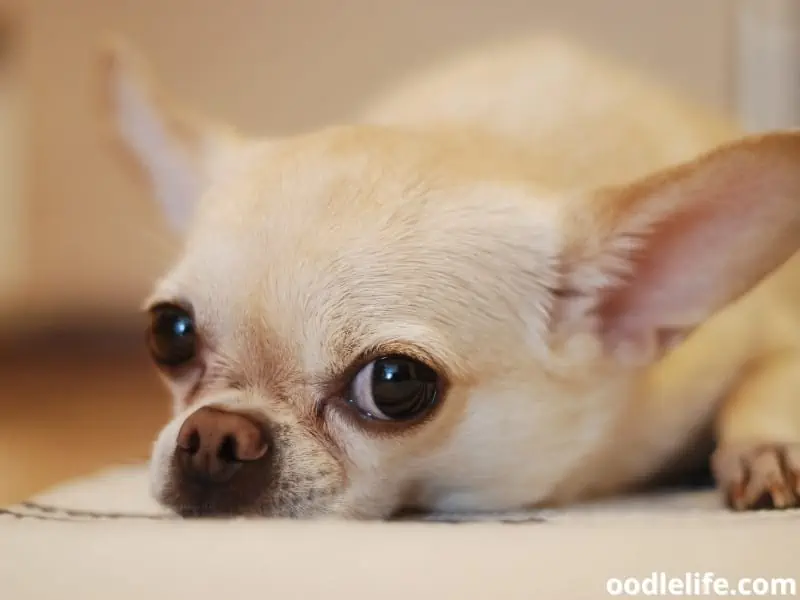
1. Bone and Eye Health
The Deer Head Chihuahua is likely to have smaller bones and can have a joint condition called patellar luxation. As the joints weaken, limping is possible. In addition, other health conditions such as rheumatoid arthritis and osteoarthritis can occur.
Eye conditions include:
- Glaucoma
- Cataracts
- Senile Otis atrophy
When the breed gets older, they can have eye issues like senile Otis atrophy, which damages the iris. The condition decreases the dog’s vision and increases light sensitivity.
2. Heart and Body Issues
Heart issues arise as well, including the following conditions:
- Heart murmurs
- Heart disease
- Mitral valve disease
- Pulmonary stenosis.
Other health issues can occur, such as bladder problems and hypoglycemia. Hypoglycemia occurs when there’s not enough glucose from the pancreas. Therefore, eating throughout the day is critical, ideally every three hours.
If you suspect your pup has hypoglycemia, pay close attention to the following symptoms:
- Feeling sluggish, lethargic
- Irritability
- Dizziness
Dental issues can also arise in Chihuahua. For instance, the Deer Head has less enamel, and there’s potential for impacted teeth.
Hypothermia is also possible due to prolonged colder climates, especially if your pup has shorter hair. The breed is also quite sensitive to lower temperatures. So keep your adorable Chihuahua warm with clothing and sweaters.
Although the breed is susceptible to specific health conditions, your pup can grow strong and healthy. However, from eye and bone to heart health, awareness and looking for warning signs is essential.
Taking Care of Your Deer Head Chihuahua
Taking good care of your Deer Head Chihuahua is possible. Keeping track of their nutritional intake, exercise, and grooming needs are critical for their overall health and happiness.
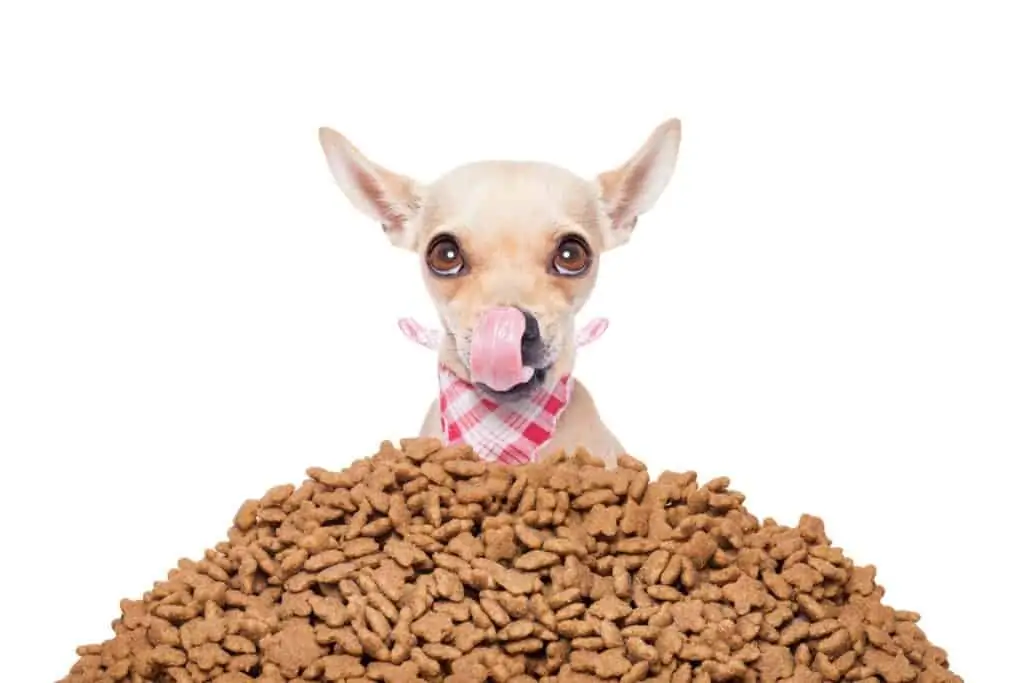
1. Food Intake and Nutrition
Due to their size, they also eat less food compared to the larger-sized pups. This is because Deer Heads need adequate fat and protein to ensure strong bones. Plus, they need the added energy.
For meals, dry kibble is the Chihuahua breed’s go-to food, as the dry texture maintains clean teeth. However, since the species has smaller throats and mouths, they’ll have difficulties eating different dog food, even if it’s dry. So it’s a good idea to look for smaller kibble to avoid issues.
On average, the small dog breed consumes 40 calories daily for every pound they weigh. According to the Pet Nutrition Alliance, an eight-pound pup needs around 256 calories daily. You’ll want to feed them a couple of times per day.
Overeating is an issue, as the breed gains weight quickly. Deer Heads only need about a cup of dry food each day.
2. Exercise
When it comes to exercise, tiny Chihuahuas don’t need a ton to stay healthy, but consistency is vital. The breed needs daily activity of around a half-hour per day. Although energetic, they don’t do well with intense sports or activities.
Short distance walks mixed with fetch and adequate playtime are enough to do the trick! However, if you notice that your pup is breathing heavily, it’s essential to take breaks.
3. Grooming
If you hate the idea of a high-maintenance grooming schedule, then the Deer Head Chihuahua is for you. While it depends on the length of the coat, they’re easy to manage. Smoother coats tend to have shorter fur.
Proper grooming includes brushing with a small brush, about once a week if you have a smooth coat Chihuahua. Your pup needs a consistent brushing schedule due to tangling for longer hair. Brushing at least a few times a week is a good idea.
Lastly, a vital grooming component is bathing. While bathing too frequently leads to skin issues, you’ll want to wash appropriately every few weeks or once a month. To maintain excellent oral hygiene, use dental sprays or chews a couple of times a day to prevent tartar and plaque.
When it comes to the Deer Head Chihuahua, less is more. The breed requires minimal food intake and exercise per day. By following the proper steps, your Deer Head pup will thrive.
Final Takeaways
Whether you are ready to take the plunge and purchase or adopt your Deer Head Chihuahua, or you are curious, I hope you feel well equipped for the journey ahead.
From fun history facts and physical and emotional traits, caring for your pup is easier now than ever. Your comprehensive guide to 11 facts about the Deer Head Chihuahua mix dog breed is complete!